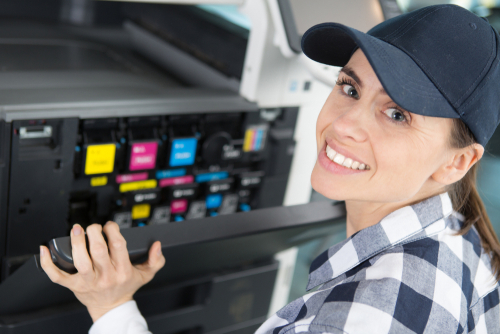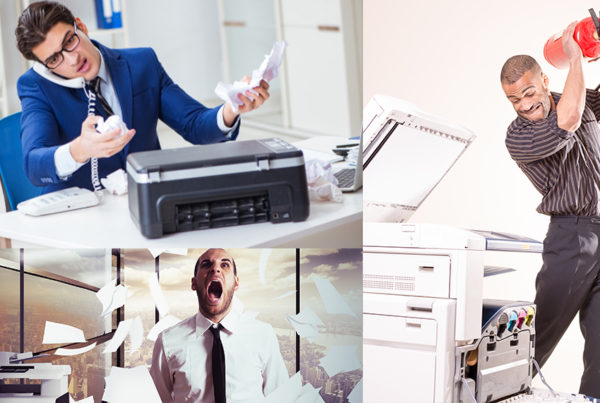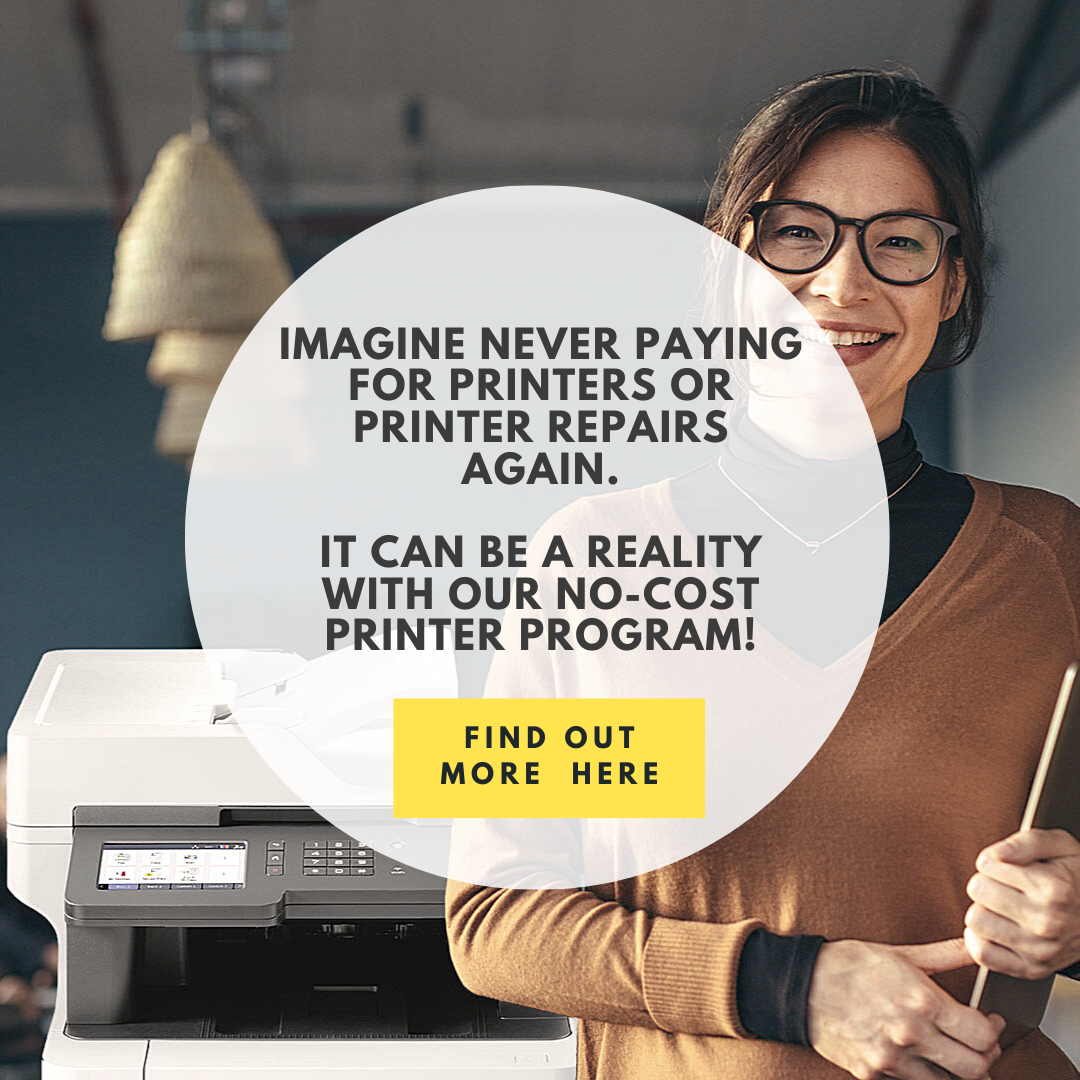Android or iPhone? Coke or Pepsi? Star Wars or Star Trek?
These are some of the celebrated questions of our modern culture, with no end in sight when it comes to debating the best option.
Inkjet vs laser printers?
Ok, maybe that dispute is not as trending. Yet the choice between two very different printers can be crucial for budget and productivity — whether it’s for the business or the home. And knowing the difference between inkjet and laser is half the battle, regardless if you’re drinking Coke or Pepsi during the consideration.
Let’s take a journey to the printer final frontier (or is it the printer Force, if you’re a Star Wars adherent?).
What is an inkjet printer?
An inkjet printer is powered by ink cartridges (sorry, not dilithium crystals). These cartridges are comprised of tiny nozzles that spray dye or pigmented ink on paper in the form of droplets — turning on and off thousands of times per second – pressured by vapor with the equivalent pressure of being 10,500 feet underwater. Ink in a cartridge is composed of 98% water, as well such elements as Glycol, Glycerin, dye, and alcohol. An average of one gallon of oil is used to create each inkjet cartridge (no, this is not a typo according to research).
Inkjet technology originated in the 1950s, but it wasn’t until the 1970s that it was paired with computers to produce digital images.
What is a laser printer?
Laser printing is an electrostatic digital printing process. The tech was developed in the 1960s, and by the early 70s commercial laser printers were rolled out to consumers.
Instead of ink cartridges, laser printers are powered by toner cartridges. These cartridges are mostly composed of a finely grounded polyester plastic. The polyester powder holds a static charge that adheres to anything with an opposite charge.
The magic in laser printers happens in a drum storing the cartridge – fusing toner powder onto paper with a heat that can reach up to 400 degrees Fahrenheit.
Buyer beware: The toner and drum unit are the two consumables required for a laser printer; sometimes they can be purchased as one piece and sometimes they come separately.
The technology for both inkjet or laser printer is more complicated than mentioned and can vary, but for practical purposes, see inkjet technology as “wet” and laser technology as “dry” (or maybe “powdery”).
But which one is the best for you?
Like most solutions in life, it depends on your needs are at the moment.
When you need an inkjet printer
Inkjet printer typically cost less than laser printers, while ink cartridges cost less than toner cartridges. As a reference, if you purchase black ink cartridges for an inkjet printer three times per year, the cost will run between $60 and $120 annually depending on brand and size. The average cost per page using black ink is 5.5 cents while the average cost per page in color is 8.9 cents (our infographic below offers more data).
A typical inkjet printer will last two to three years. When it comes to color or photo printing, inkjet printers are usually superior.
Thus, inkjet printers are better for:
- Small/home businesses
- High-quality photos or anything with tonal depth or brilliant
- Larger need for paper size variety (and this can include glossy paper or fabrics)
- Less demand for quick printing (can print up to 16 pages/minute)
If you’re looking out your neighborhood window as you work throughout the day, then an inkjet printer might be for you. What’s more, there are multifunction inkjet printers that can take care of your scan, copy, and fax needs.
When you need an inkjet printer
Laser printers are more expensive, as mentioned, but they tend to last longer (an average of five years). These devices will save you more money in the long run, especially if you’re printing thousands of pages a month. A laser printer typically yields lower costs per page: 3.9 cents using black ink and 8.3 cents using color ink. It all depends on how much you print. Toner technology (that “dry” stuff) still hasn’t matched inkjet technology when it comes to color or photo printing, but experts believe that gap is being bridged.
Thus, laser printers are better for:
- Larger offices
- Black & white documents
- Smaller need for paper size variety
- Faster need of documents (can print up to 100/minute)
If you see cubicles and water fountains in your workday, then having a laser printer is probably the way for you. And if you’re in a document-heavy vertical like legal or accounting, even if you’re in a small space, a laser printer will likely be the best fit.
To summarize, Consumer Reports recently weighed in on this issue (and takes a stand!):
“Inkjets tend to be cheaper than lasers, especially color lasers, and they are better at printing photos. However, if you want to go for long stretches without having to replace ink or toner, it’s worth considering a laser printer. As an added advantage, laser printers tend to outperform inkjets on predicted brand reliability and owner satisfaction, ratings that are based on annual surveys of Consumer Reports members.”
Mind you, Consumer Reports also declared Android smartphones better than iPhones once, and that didn’t make a difference in the debate.
What about the best of both worlds?
Sometimes the choice might not have to be a choice. What’s wrong with appreciating equally Star Wars and Star Trek? Just as your break room might store Coke and Pepsi, having a combination of laser and inkjet printers could be the best possible avenue. The key is to send large black and white volumes to your laser printer (as the cost is less per page) and tap into the inkjet for color collaterals.
For a further understanding of inkjet vs laser printers, and all your printer needs, check out our infographic:








